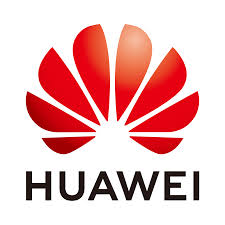Weekly News: Huawei Releases 5G Antenna Design Technology – CableFree
May 23, 2020
1. Huawei Releases 5G Antenna Design Technology - CableFree
2. ATIS issues call to action to promote US leadership in future 6G tech
3. KKR pushes Reliance Jio investment beyond $10B
4. T-Mobile lays out $60B, five-year buildout plan for 5G
5. India postpones 5G spectrum sale to 2021

Huawei Releases 5G Antenna Design Technology - CableFree
Huawei recently released a new technology for antennas CableFree. The new technology will enable base station antennas to significantly improve in multiple key capabilities, including integration, radiation efficiency, and power capacity. This marks a new stage of antenna development in the 5G era.
5G has seen more bands introduced and higher-order MIMO applied to mobile networks. This leads to an excessive increase in the internal complexity of multi-band antenna structure, placing antenna design under vast challenges in multiple areas. These include antenna performance, power capacity, reliability, and production efficiency. Huawei’s CableFree technology breaks the bottleneck in current antenna design to substantially improve antenna performance and meet 5G construction requirements.
1. Exceptional high-band coverage for 5G. The introduction of high frequency bands in 5G requires antenna gains to be significantly increased to provide wide coverage. This further mandates multi-band coordination to complete such wide coverage. A typical example is to utilize 1.8 GHz and 2.1 GHz bands to implement 5G uplink coverage. Therefore, high-band coverage is essential for ensuring 5G experience consistency. CableFree improves antenna radiation efficiency by approximately 20%, boosting high-quality coverage of the 5G era.
2. Higher output power to facilitate 5G multi-band and multi-channel applications. 5G is designed to meet high-capacity and high-speed requirements, and this highlights the necessity of introducing new spectrum and deploying high-order MIMO technology. To adapt to this trend, antennas must accommodate a high power of up to 1 kW, far above 500 to 600 watts of previous radio access technologies. CableFree increases the antenna power capacity by more than 80%, meeting the requirements for higher output power in the 5G era.
3. Reduced antenna weight to facilitate installation. A higher level of antenna component integration offers an effective approach to reduce antenna weight. With CableFree, a six-band antenna can be 10 kg lighter. The weight of multi-band antennas can be kept below 50 kg. As a result, a crane is not required during installation, simplifying installation and reducing cost.
4. Better PIM performance. PIM is short for passive intermodulation, reflecting signal interaction at the junction of two metal mechanical components of antennas. CableFree reduces screws and soldering points in antennas by 80%, reducing PIM risks while also ensuring long-term PIM stability. The resulting novel architecture and process further improve production automation and consistency among batches.
CableFree features a number of revolutionary technologies and techniques, including cable-free feeding and integrated phase shifters. This produces a distinct increase in antenna integration, tangibly improving antenna performance. To date, CableFree has been successfully applied to Huawei’s Munich Pro, Golden Mini, and London Pro series antennas, as well as 32T32R Massive MIMO products, helping customers quickly deploy high-quality 5G networks.
Read more.
ATIS issues call to action to promote US leadership in future 6G tech
The Alliance for Telecommunications Industry Solutions (ATIS) announced a call to action and shared its vision for collaboration across government, academia and industry to promote U.S. leadership on the path to 6G.
ATIS noted that the timeline for 6G development has already begun, as today’s investments in 5G networks, devices and applications already point toward the future opportunities for 6G. The entity highlighted that collaborative steps and an aligned commitment between government and industry was key to ensure the U.S. maintains a competitive technology position in 5G networks today and 6G networks in the future.
“COVID-19 has brought unprecedented economic and public health challenges, and it has also shone a spotlight on the critical role of communications networks in our daily lives, as the connective fabric between people,” said Susan Miller, President and CEO, ATIS. “While innovation can be triggered in reaction to current market needs, technology leadership at a national level requires an early commitment and development that addresses U.S. needs as well as a common vision and set of objectives.”
ATIS’ Call to Action promotes a holistic approach, beginning with innovative research and development that addresses U.S. needs, a commitment to standardization, and full-scale commercialization.
Read more.
KKR pushes Reliance Jio investment beyond $10B
Reliance Industries announced KKR will invest INR113.7 billion ($1.5 billion) in its tech subsidiary, the fifth major investment in the unit in a month and taking the total to $10.46 billion.
The US private-equity company will acquire a 2.32 per cent stake in Jio Platforms, its largest investment in Asia, Reliance Industries stated. In recent weeks, the India conglomerate sold around 17 per cent of Jio Platforms, with the latest investment giving the unit a valuation of $65.4 billion, the company said.
Henry Kravis, co-founder and co-CEO of KKR, said few companies have the potential to transform a country’s digital ecosystem in the way Jio Platforms is in India and potentially worldwide.
The business “is a true home-grown next-generation technology leader” which is “unmatched in its ability to deliver technology solutions and services to a country that is experiencing a digital revolution”, Kravis explained.
“We are investing behind Jio Platforms’ impressive momentum, world-class innovation and strong leadership team.”
Jio Platforms operates broadband and online commerce services, including Reliance Jio, India’s largest mobile operator with 388 million subscribers.
Mukesh Ambani, chairman and MD of Reliance Industries, said: “I am delighted to welcome KKR, one of the world’s most respected financial investors, as a valued partner in our onward march to growing and transforming the Indian digital ecosystem for the benefit of all Indians. KKR shares our ambitious goal of building a premier digital society in India.”
Earlier in the week, Reliance Industries sold a 1.34 per cent stake to private equity company General Atlantic for $869.3 million, adding to deals with Vista Equity Partners, Silver Lake and Facebook.
Read more.
T-Mobile lays out $60B, five-year buildout plan for 5G
Now that T-Mobile has officially closed its merger with Sprint, company officials are beginning to offer details about exactly how the operator will construct “the world’s best broad and deep nationwide 5G network.”
T-Mobile executives explained that the operator began laying the groundwork for its buildout last year, before the company’s merger with Sprint was completed, which is how it was able to turn on 5G in Sprint’s 2.5GHz spectrum in Philadelphia and New York City just weeks after it closed its merger.
“I think we’ve all surprised ourselves at how quickly we’ve been able to get work done,” said T-Mobile network chief Neville Ray during an appearance at an investor conference Tuesday.
Importantly, even during the COVID-19 pandemic, Ray said T-Mobile has been hanging 2.5GHz transmission radios on its existing cell towers at the rate of roughly 1,000 towers per month – a rate he said the operator expects to increase as it moves into the summer.
“So far so good,” he said. “We are ramping up in this [pandemic] environment, not actually slowing down.”
Prior to the close of T-Mobile’s merger with Sprint, the operator counted a total of roughly 65,000 macro cell towers across the country, explained Ray. Now that its merger with Sprint is complete, he said the company’s goal is to grow that number to a total of 85,000 macro cell sites by building 15,000 new cell towers and decommissioning an unspecified number of unnecessary, overlapping Sprint cell sites. Those figures roughly align with the plan the operator laid out in 2018 when it announced its merger with Sprint.
T-Mobile is hoping to install 2.5GHz radios on around 30,000 towers in major metropolitan areas quickly – though Ray did not specify a timeframe for that effort – and then later the company would work to construct the additional 15,000 new towers it will need.
T-Mobile is currently in discussions with tower companies to complete that work. “We’re looking to drive some healthy competition between those folks,” said Ray.
It often takes five to ten days for tower work crews to add the necessary equipment to a tower, but it frequently takes months to obtain the proper permits from local regulators, Ray explained.
The addition of Sprint’s midband 2.5GHz spectrum to T-Mobile’s lowband 600MHz 5G network is “really going to deliver an incredible 5G experience,” Ray said, noting that the operator is already seeing speeds of 600-700Mbit/s on early operations.
T-Mobile’s high-speed 5G coverage area will quickly dwarf those from its rivals, according to Ray. Interestingly, he said T-Mobile’s 2.5GHz 5G network in Philadelphia, completed in a month, is roughly 2.5x larger than the 5G network running in millimeter wave (mmWave) spectrum that Verizon has constructed in roughly 30 cities over the past 18 months.
However, to be clear, a mmWave 5G network requires the installation of a much larger number of transmitters than a 2.5GHz network, because signals in 2.5GHz travel much further than signals in mmWave spectrum. The benefit of mmWave 5G is that it can support speeds well above 1Gbit/s.
In his comments, Ray didn’t mention T-Mobile’s small cell plans. The company today counts around 26,000 small cell/distributed antenna system sites, and T-Mobile in 2018 said it would increase that number to around 50,000 after the close of its Sprint merger.
Finally, T-Mobile CEO Mike Sievert pointed out that the operator’s 5G buildout won’t rely exclusively on its lowband 600MHz and midband 2.5GHz spectrum licenses. Indeed, while it was working to close its Sprint merger, T-Mobile spent roughly $1.7 billion collecting mmWave spectrum licenses across the country during the FCC’s three recent mmWave spectrum auctions.
“Our competitors obviously spent a lot of time trying to convince everybody that 5G was synonymous with mmWave,” Sievert said. Verizon has made mmWave 5G the centerpiece of its marketing. “We’ve always been fans of mmWave, as an augment.”
T-Mobile’s end goal – one that Sievert said the operator would spend up to $60 billion over the next five years reaching – is to deploy a “layer cake” 5G network across the US. That layer cake will include lowband spectrum for coverage, midband spectrum for capacity inside cities, and highband, mmWave spectrum for extra-fast speeds in dense urban areas. T-Mobile has already deployed this kind of network in New York City.
Read more.
India postpones 5G spectrum sale to 2021
India is likely to proceed with a spectrum auction before October this year, although it plans to exclude the 5G spectrum (that is in the 3.3GHz to 3.6Ghz frequency range) from its offering.
What will then be another 4G auction would include spectrum in the 700MHz, 800MHz, 900MHz, 1800MHz, 2100MHz, 2300MHz and 2500MHz bands. In total, about 8000MHz of spectrum, valued at roughly 3 trillion Indian rupees ($39.5 billion), will be on sale. Delayed from last year, the auction is crucial for Bharti Airtel and Vodafone Idea, both of which hold licenses that are coming up for renewal in several circles (service areas).
But all the service providers, including Reliance Jio as well as Airtel and Vodafone Idea, have asked the government to lower the high base price for the spectrum, and especially that of 5G. Airtel says it will not participate in the auction at the current reserve prices. The Department of Telecommunications has attached a base price of INR4.92 billion ($64.9 million) per MHz to spectrum in the 5G band.
Read more.
